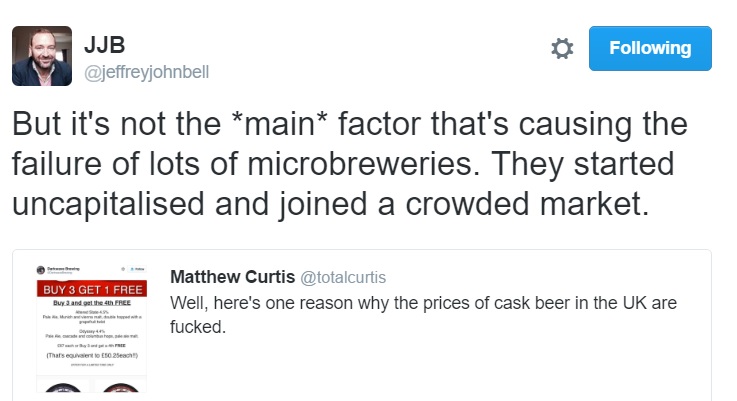I have been thinking about the Torontonianness of Bert Grant,* the owner of the the first brewpub to open in America since Prohibition. We are told that after “a long career working in big breweries on the other side of the country, Burt* Grant moved to Yakima in 1981 to build his own brewery: Grant’s Brewery Pub.” This 1997 news item on that year’s sale of his brewery (which includes some timely puff about expansion tied with quality control all care of his new partners whose skill set including running a big tobacco firm) describes his origins in this brief passage:
The Scottish-born, Canadian-bred Grant, 68, began honing that palate at age 16, when he went to work for Canadian Breweries Ltd. (now Carling). His brewing career led to jobs in the hops supply business, which brought him to the heart of Washington’s hop country in Yakima, where he opened a tiny brewery in 1982.
On 3 August 2001, Michael Jackson published a rich obituary for Grant that is still there online which describes, along with a few of his odd character traits, his early hop obsession:
“When you were brewing Canada, ales were still very popular. How many units of bitterness did they typically have?” I once asked. “I don’t know. I hadn’t invented the scale,” he replied. He was reputed to carry a vial of hop oil, and to add it to glasses of Bud, Miller or Coors when they were the only brews available. He was said to have done this at meetings of Master Brewers in Milwaukee and St Louis, dismaying his peers. “Michael Jackson adds it to his coffee,” he is alleged to have said, in his defence. Did he really say that? I think that joke was coined by beer-writer and consultant Vince Cottone.
I am nosing around working on the hypothesis that I was discussing with Jeff on the weekend via tweet. And down one alley I found this fabulous passage below from the Fred Eckhardt Oral History Interview of July 23, 2014 stored as part of the Oregon Hops and Brewing Archives Oral History Collection at the Special Collections and Archives Research Center, Oregon State University Libraries. The interview of Fred Eckhardt (FE) was conducted by Tiah Edmunson-Morton, Tim Hills (TH), and John Foyston (JF):
FE: Yeah. Yeah. And then, the fella from England. What was his name? He was a nice guy too. Um…
JF: Not Michael Jackson?
FE: No, another…
JF: Oh. Was he a brewer here?
FE: Yeah, he had a brewery finally, over in Washington, and then here. I can’t think of his name either.
TH: Oh, Burt* Grant?
FE: Burt Grant! Yes.
TH: He was English?
JF: That was the “nice guy”. That threw me off. [All laughing]
FE: You knew him?
JF: Yeah, I knew him.
FE: And you didn’t think he was…
JF: Well, he was uh, a character, but see, you were an equal, and I was not. I was a mere sprout. So… [Laughter]
FE: [Laughter] You just got older recently. [All laughing] I’m not gonna tell everybody you were 67.
TH: Happens all of a sudden. But yeah, Burt was really early.
Beautiful. Makes sense. I have not read as widely about Bert Grant as I hope to soon but it is so nice to read that he was a bit weird, maybe uppiddy and a touch disagreeable. We are all so quick to praise and beatify to the point of blandification that coming across the mere human in craft is becoming sadly rare.
*Oddly, seeing his name spelled as both “Burt” by some sources like the interview transcription but “Bert” by Michael Jackson and The New York Times.



 At Item H.1 of Table X of section B.16.100 of the
At Item H.1 of Table X of section B.16.100 of the